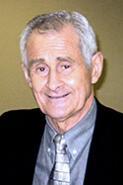October 15, 2012
CSA S250 improves safety
By Terry Murphy CLM
 While the Canadian Standards Association (CSA) S250 standard for as-built drawings was developed with the underground utility infrastructure in mind, it can be used by any company to produce final drawings of a completed project.
While the Canadian Standards Association (CSA) S250 standard for as-built drawings was developed with the underground utility infrastructure in mind, it can be used by any company to produce final drawings of a completed project.
In the landscape industry, landscape architects and contractors are required to produce as-built drawings.
CSA Group’s S250 Mapping of Underground Utility Infrastructure has its origins from long-established mapping best practices and internal utility company mapping standards. It was developed by a committee made up of of industry experts, regulators and user groups, all with vested interests to improve the overall quality and consistency of mapping and records information of underground utility infrastructures.
Fundamental to the development of CSA S250 is the two-fold recognition that it is a privilege, not a right, to bury anything underground in the public right-of-way. It is in consideration of that privilege that utility owners are obliged to provide an accurate location of the underground utility infrastructure.
One of the key benefits of using CSA S250 is the improved accuracy, reliability and greater confidence in the location and properties of underground infrastructures. The standard establishes levels that set tolerances for the spatial accuracy of as-builts, and promotes better record keeping. The CSA S250 will show specified underground infrastructures. The goal is to create consistent data that is shared and reviewed.
CSA’s S250 technical committee chair Bob Gaspirc, City of Toronto, and vice-chair Laverne Hanley, Union Gas, were recently interviewed. An online video clip provides an overview of S250, and what factors drove the need to create the standard. The video also informs viewers on who will use it, and the impact of the standard. It can be viewed free at http://bit.ly/QPK7G4.
The development of this standard is another effort by the industry to improve the accuracy of underground asset locations, so that those assets can be located and marked if any excavation is required. This minimizes the potential for utility strikes and protects everyone’s safety when dealing with underground utilities. The landscape design community may want to obtain a copy of the new standard by contacting CSA directly at http://bit.ly/Pg3g3B.
Terry Murphy can be reached at tvmurphy@ca.inter.net.
 While the Canadian Standards Association (CSA) S250 standard for as-built drawings was developed with the underground utility infrastructure in mind, it can be used by any company to produce final drawings of a completed project.
While the Canadian Standards Association (CSA) S250 standard for as-built drawings was developed with the underground utility infrastructure in mind, it can be used by any company to produce final drawings of a completed project.In the landscape industry, landscape architects and contractors are required to produce as-built drawings.
CSA Group’s S250 Mapping of Underground Utility Infrastructure has its origins from long-established mapping best practices and internal utility company mapping standards. It was developed by a committee made up of of industry experts, regulators and user groups, all with vested interests to improve the overall quality and consistency of mapping and records information of underground utility infrastructures.
Fundamental to the development of CSA S250 is the two-fold recognition that it is a privilege, not a right, to bury anything underground in the public right-of-way. It is in consideration of that privilege that utility owners are obliged to provide an accurate location of the underground utility infrastructure.
One of the key benefits of using CSA S250 is the improved accuracy, reliability and greater confidence in the location and properties of underground infrastructures. The standard establishes levels that set tolerances for the spatial accuracy of as-builts, and promotes better record keeping. The CSA S250 will show specified underground infrastructures. The goal is to create consistent data that is shared and reviewed.
CSA’s S250 technical committee chair Bob Gaspirc, City of Toronto, and vice-chair Laverne Hanley, Union Gas, were recently interviewed. An online video clip provides an overview of S250, and what factors drove the need to create the standard. The video also informs viewers on who will use it, and the impact of the standard. It can be viewed free at http://bit.ly/QPK7G4.
The development of this standard is another effort by the industry to improve the accuracy of underground asset locations, so that those assets can be located and marked if any excavation is required. This minimizes the potential for utility strikes and protects everyone’s safety when dealing with underground utilities. The landscape design community may want to obtain a copy of the new standard by contacting CSA directly at http://bit.ly/Pg3g3B.
Terry Murphy can be reached at tvmurphy@ca.inter.net.